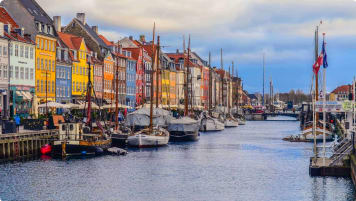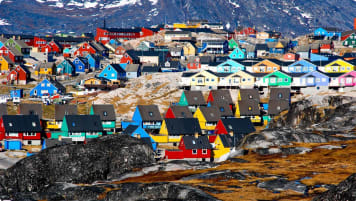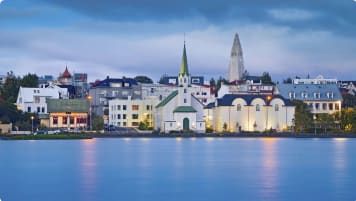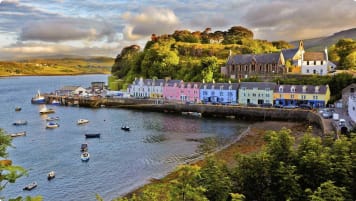Creating the Faroe Islands: The Nation's Story of Wealth and Self-Governance
Creating the Faroe Islands, an independent constituency of Denmark. A short piece for mature solo and senior couples looking to join a small group tour to these Islands which played an important part in both Viking and Scottish history. An Antipodean travel company serving World Travellers since 1983.
19 May 23 · 10 mins read

History of the Faroe Islands
The Faroe Islands, also referred to as the Faroes or Faeroes, is a self-governing region of the Kingdom of Denmark, a pristine archipelago of 18 volcanic islands sitting in the North Atlantic ocean between Iceland and Norway. The total land area on the islands is smaller than London, and with a population of only 50,000 people, its inhabitants are outnumbered by sheep nearly two to one. Despite its humble nature, however, the region has a fascinating history as a site of Viking settlement and then province of Norway and Denmark, before carving out self-rule for itself on the back of a flourishing fishing industry and revived Faroese language and culture.
This article explores the history of the Faroe Islands and how they created wealth and self-governing rule for themselves. It is intended as background reading for Odyssey Traveller’s Faroe Islands Tour for mature and senior travellers. This five-day small group tour with local guides takes your on a trip off the beaten path to visit some of the islands’ most stunning sights and to explore the capital of Tórshavn, while discovering the interesting history of the Faroes and its unique culture.

The First Settlers
The first known people to settle in the Faroe Islands were Irish monks and an abbot named St. Brendon in 565 CE. The legend goes that they set sail from Scotland, discovering an archipelago after several days of sailing, which they labelled the “Islands of the Sheep and the Paradise of Birds.”
Faroese ancestry, however, can be traced to Norse Viking emigrants, who colonised the islands in the 9th century. This occurred as part of a larger Viking conquest of northwest Europe and newfound lands further west, fleeing from the tyranny of Norway’s first king, Harald I. The name Føroyar (Faroe Islands), itself, is derived from old Norse and means ‘Sheep Islands’.
The Archaeologist Richard Hall writes, “The Faeroes were attractive to Viking settlers because, isolated though the islands were, they included places where crops could be grown, and the mountains provided ample grazing. The cliffs teemed with a profusion of seabirds that could provide eggs and meat, and the seas were abundant with fish, whales and seals.”
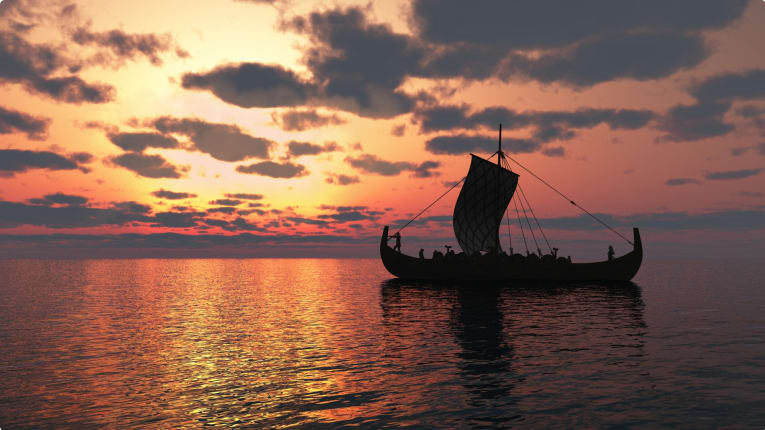
The settlers formed a polity with its own constitution, originally founded on the ancient Viking traditions of the 9th century. They also established a parliament (Althing, later Løgting) in Tórshavn, the capital city, then and now, of the Faroe Islands, in which all free men could participle. This makes the Faroese parliament one of the (if not the) oldest existing parliaments in the world.
Christianity was introduced to the islands around 1000 by the king of Norway – supplanting the rites associated with the Norse pantheon – and a bishopric was established at Kirkjubøur. A historic church at Kirkjubø, Olavskirkjan, dating back to the 1200s, is still in use today.
Modern-day knowledge about these Viking settlers in the Faroes comes largely from a variety of archaeological finds. One of the earliest recorded discoveries occurred in 1863, when grave diggers on the island of Sandoy found a hoard of silver that had been buried in c. 1100. The hoard consisted of a silver amulet and 98 coins from England, Ireland, Denmark, Norway and Hungary. Although the islands may appear remote, this find indicated that they were clearly connected to the trading networks of the Viking world.
The Faroe Islands Under Norway and Denmark
In 1035, upon the death of the Faroe Islands’ last Viking chieftain, Tróndur í Gøtu, the islands became a province under the Norwegian kingdom. Norwegian supremacy continued until 1380, when the kingdom entered into the Kalmar Union with Denmark. Still, for some time the Faroes remained considered a Norwegian dependency, belonging to the Arch Diocese of Norway, and most strongly connected with Bergen in regard to administration, trade, and culture.
The Kalmar Union would gradually result in Danish control of the islands though, in step with the state’s own consolidation of power. The islands’ trade connection, for example, overtime moved increasingly from Bergen to Copenhagen. While Hansa merchants had dominated commerce had in the 14th century, it was later granted as a privilege to various individuals and companies and in 1619 the main trading centre was transferred to Copenhagen.
Then, in the early 18th century, the Faroes became a Danish royal trade monopoly, restricting its economic development. This monopoly was combined with the Finmark, Iceland, Greenland trades later in the century. However, whereas the royal monopoly for Finmark and Iceland were soon after abolished, this was not for the Faroes; its time to have its trade abolished would not come until 1856.
In the meantime, the Reformation in the form of Lutheranism had hit the Faroe Islands. Following its introduction in the 1530s, the Catholic bishopric was abolished, and the islands became part of the bishopric of Bergen. Then from the beginning of the 1600s, it became part of the bishopric of Sjælland.
The Faroe Islands officially came to be fully integrated under the Danish central administration in the early 19th century as part of the Napoleonic wars. At the Peace of Kiel, Denmark, who had been allied with France, ceded Norway to Sweden. However, it kept the Norwegian dependencies of Greenland, Iceland, and the Faroes. In 1816, the old Løgting was officially abolished and replaced by a Danish judiciary, as the Faroes were given the status of a Danish province. Soon after, in 1850, the Faroes endorsed Denmark’s new constitution, and were given two seats in the Rigsdag (Danish parliament).
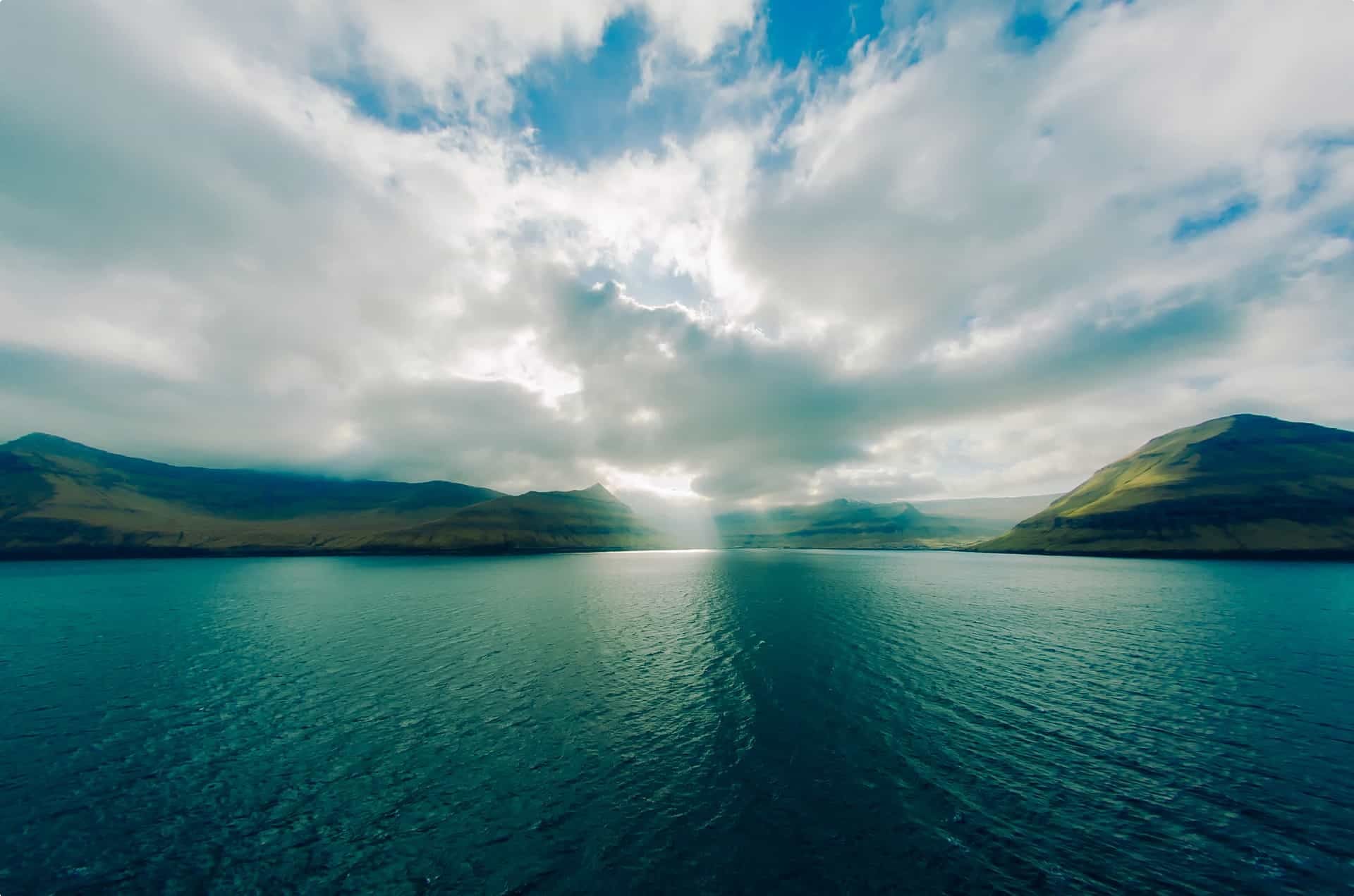
Cod Transforms the Islands
Due to the Danish royal trade monopoly, the Faroe Islands remained a poor peasant society for most of the 19th century. The monopoly restricted any sort of development beyond the most basic of subsistence economies. When it was abolished in 1856, however, the Faroe Islands would develop a commercial industry focused on exports, especially of preserved cod, and began to accumulate wealth, kickstarting the development of a modern market economy. Appropriately, the author John Goodlad describes cod as “the engine that carried Faroe into the industrial age.”
As soon as the royal trade monopoly was lifted, a number of shrewd entrepreneurs jumped on the opportunity to establish independent businesses. Before too long, merchant companies were established in all the Faroese villages. -Some of these companies soon saw the potential in setting up cod fishing and exporting businesses. The first decked cod sloop, The Fox, was bought from England by Faroese owners in 1872, but it was not until the early 20th century that the cod industry began a spectacular expansion, with many second-hand smacks being bought from the nearby Shetland Islands.
Cod was a profitable business, due to its popularity as a staple food of the Mediterranean diet. Once salted and properly dried, the fish is almost entirely protein. Simple to store, easy to transport and cheap to buy, it was once an essential guarantee against hunger in Southern Europe. Even today, as other sources of protein have also become affordable, it serves as an important component of not only basic meals, but also as part of elegant dishes served in the finest of restaurants.

So, as the Faroese cod fishery developed, it unsurprisingly turbocharged the economy, providing wages for a society where most people had previously lived hand to mouth. In fact, so many Faroese men became cod fishermen that the industry came to define what it meant to be Faroese in the early 20th century. They fished the Faroe Bank, but they also developed their own distant-water operation, fishing around Iceland, Rockall, and Greenland.
As the economy boomed, so did the islands’ population. In 1900 there were only 15,000 people. By the Second World War, this had increased to 30,000 – a doubling in only 40 years. Today, the population is 53,000.
Before the technology of freezing cod was utilized, salt was the best way to preserve the fish. And when the salt cod industry was at its peak, enormous quantities of salt were needed to supply the fleet of sloops. It was so decided to build one huge storage silo to service the entire Faroese fleet, located in Suðuroy, on the outskirts of the islands’ capital, Tvøroyri. Capable of holding 10,000 tons of salt, this vast concrete and steel structure was completed in 1939. As freezing did eventually replace curing though and demand for salt declined, the silo was finally abandoned in 1939.
Rather than destroy this iconic part of Faroese history, however, Maersk (Denmark’s biggest corporation and the largest shipping company in the world) combined with the Danish and Faroese governments to transform it into a concert hall. Opened in 2017, the ultra-modern concern hall is known as SALT – an abbreviation for ‘Sounds, Arts, Live, Theatre’ – deliberately evoking its original purpose. While most of the original silo has been retained, bold additions of glass within and without provide natural light and optimise the stunning fjord seascape. Most of its interior, meanwhile, is given over to a huge auditorium which can seat 400 people for international events, art exhibitions, theatrical productions, and live music events.
Saving the Faroese Language
A distinct language developed on the Faroe Islands between the 9th and 15th centuries, evolving from the Old West Norse language originally brought over by Norwegian Viking settlers. After the Reformation in 1538, however, the ruling Danes worked to suppress the language. It was completely banned in schools, churches, legal documents, and newspapers.
The wider Faroese community, nevertheless, continued to speak and sing the language in ballads, folktales, and everyday life. Although the language was not written down for some 300 years after the Danes banned its use, the people still maintained a rich spoken tradition. It wasn’t until 1846 that the written language that is still used today formally came into being. This was thanks to one Vencelaus Ulricus Hammershaimb, a folklorist who created a spelling system for the Faroese language, orthographically consistent with a continuous written tradition extending back to Old Norse.
Then, as Faroese economy boomed over the following decades and a national confidence grew, pushes began for Faroese to become the official language of the church, law, culture, and literature in the islands. Advocates pointed to the fact Faroese was very close to the original language the Vikings had spoken. They reasoned that if the Norse sagas, some of the finest medieval literature in Europe, could be written in the speech of the Vikings, why should Faroese not be the islands’ official language.
The advocates also used the nearby Shetland Islands as a warning signal to the Faroese about what would happen if they allowed their language to die, as the Shetlanders had done with theirs. Gradually over generations, after Shetland became part of Scotland in 1469, the words and idioms of the original Shetland Norn language were replaced by Scots equivalents, and the language that was spoken changed. The Shetland experience was recounted repeatedly in Faroe as advocates implored the Faroese to always use their native tongue.
The campaign was eventually successful, and Faroese was saved from extinction. In 1912, oral Faroese became a school language, as did the written language in 1920. It then became the official school language in 1937 and then the official language of the church in 1938. Finally, in 1948, the Home Role Act established it as the national language of the Faroes. It is now the medium of all discourse in the islands.

Self-Governance
The revival of the Faroese language can be seen as the impetus of a cultural and political awakening in the islands. As modern literature arose, themes such as the Faroese people, freedom, and growth came to be communicated as part of an emerging sense of a shared culture and national identity. This would in turn lay the ideological foundation for the movement towards political autonomy in the 20th century.
The Faroese then got a taste of independence during the Second World War, as Germany occupied Denmark, leaving the Faroese to effectively govern themselves. After the war, the Faroese could no longer accept going back to the way it had been before. A new relationship needed to be negotiated between Faroe and Denmark.
In 1946, a referendum was held, and a small majority voted for independence from Denmark. However, following parliamentary elections that same year, a majority of parliament members decided to remain under Danish rule. Instead, new negotiations began again in Copenhagen – and in response to the growing calls for autonomy, the Faroe Islands were eventually granted self-governance while remaining under the authority of Denmark.
This agreement was formalised with the passing of the Home Rule Act in 1948, which enabled the Faroese parliament to make decisions on all matters of importance to the islands, including fisheries, while remaining part of Denmark. Ever since, two Faroese representatives have sat in the Danish legislature, called the Folketing. The Folketing oversees foreign policy, military defence, police, and the monetary and judicial systems for all of Denmark.
Despite an economic crisis which occurred in the 1990s, following the collapse of the Faroese fishing industry, the islands have recovered economically and now flourish under self-rule. It is an affluent society, with one of the best broadband services in the world, full employment, an excellent health service, and a first-class public education system, all under a welfare system much like the other Scandinavian countries.
The political debate within the islands is now about whether Faroe should go further and become an independent nation state. Interestingly, the conventional right and left spectrum is divided over the issue. There are two conservative parties, one advocating independence from Denmark, the other wanting to preserve the devolved status quo. On the left there are also two parties, again defined over their differing policies on independence. Other than this, arguments over fisheries policy are often the defining political questions for this small community.
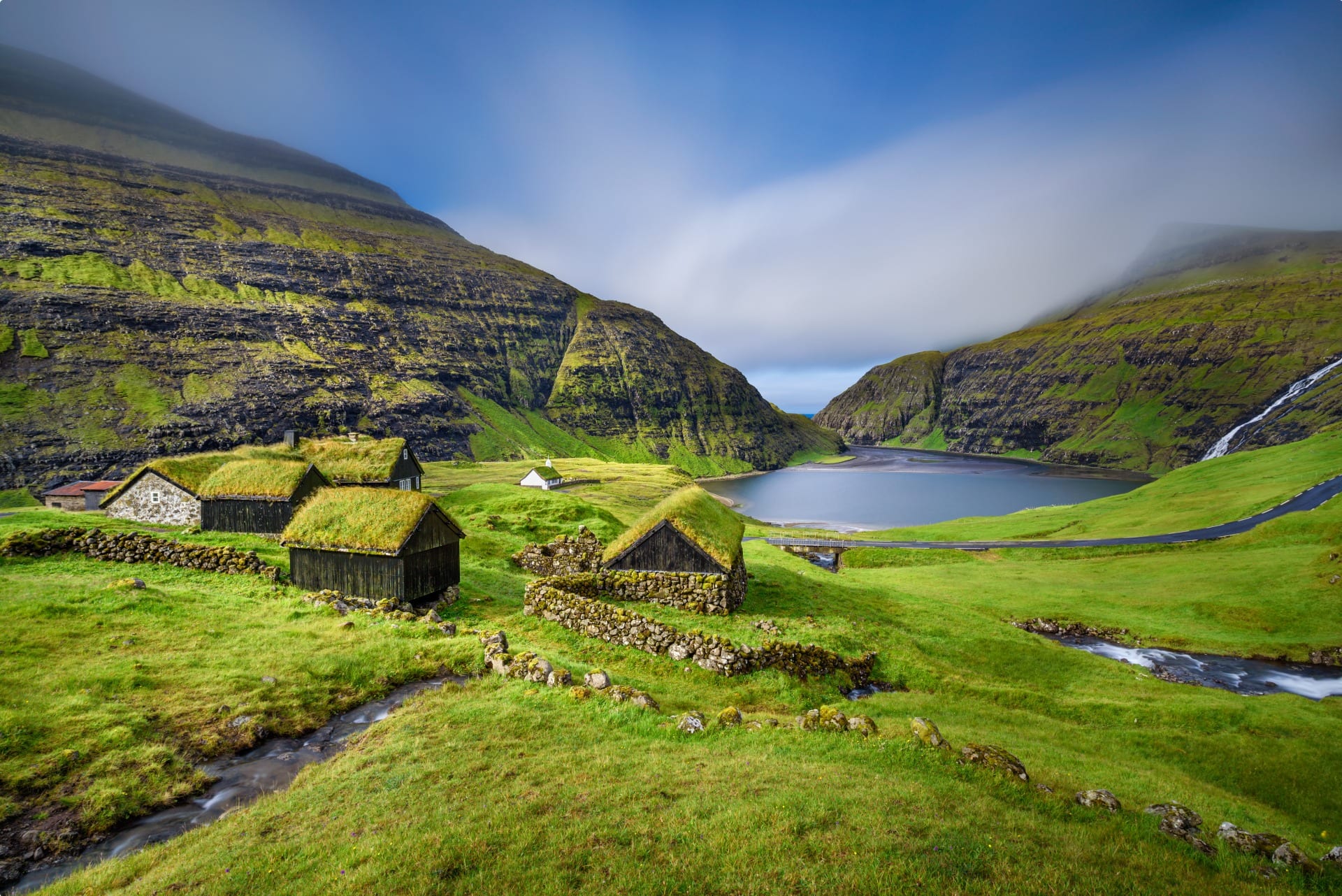
Tour of the Faroe Islands
Odyssey Traveller visits the Faroe Islands on its five-day Faroe Islands Tour. For this small group tour for mature and senior travellers, we base ourselves in Torshavn, which is one of the world’s smallest capitals. From here, we travel to different parts of the archipelago including the villages of Gásadalur, Vestmanna, Kirkjubøur and Gjógv. This allows you to explore all corners of this beautiful collection of islands, taking in the epic coastline, magnificent sea cliffs and colourful scenery. Along the way, we discover the interesting history of the Faroes and its unique culture shaped by the Vikings, as they explored the Atlantic, and the influences of the cultures of the Arctic circle.
Odyssey Traveller has been serving global travellers since 1983 with educational tours of the history, culture, and architecture of our destinations designed for mature and senior travellers. We specialise in offering small group tours partnering with a local tour guide at each destination to provide a relaxed and comfortable pace and atmosphere that sets us apart from larger tour groups. Tours consist of small groups of between 6 and 12 people and are cost inclusive of all entrances, tipping and majority of meals. For more information, click here, and head to this page to make a booking.
Articles related to the Faroe Islands and Scandinavia published by Odyssey Traveller.
The following is a list of articles published by Odyssey Traveller for mature aged and senior travellers to maximise their knowledge and enjoyment of the Faroe Islands
- Explore the Faroe Islands
- Scandinavia Tours
- Scandinavian Design Tour
- Denmark Culture & History Tour
- Iceland Culture & Wilderness Tour
- Discover Greenland Small Group Tour
- Baltics Small Group Tour
- Irkutsk to Helsinki on the Trans-Siberian Railway
- Helsinki to Irkutsk on the Trans-Siberian Railway
For all the articles published on Denmark by Odyssey Traveller, please click through on this link to view.
External articles to assist you on your trip to the Faroe Islands
Related Tours
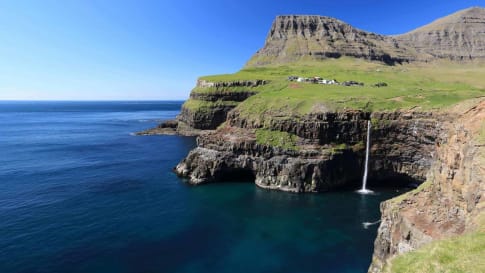
5 days
Apr, SepFaroe Islands Tour
Visiting Denmark
Few European tour companies offer small group journeys to the Faroe Islands. This five-day small group tour designed for mature couples and solo travellers. Local guides take you on trips off the beaten path to visit some of the islands' most stunning sights and to explore the capital of Tórshavn.
From A$7,250 AUD
View Tour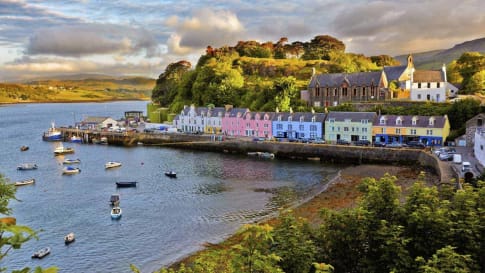
20 days
May, Jul, Aug, SepScottish Islands and Shetland small group tours for seniors
Visiting Scotland
An escorted small group tour for couples and solo travellers of the Scottish isles including the isle of Skye draws on local guides to share their knowledge of the destinations in this unique part of Scotland. UNESCO world heritage site are visited as breathtaking scenery and authentic experiences are shared in a group of like minded people on this guided tour of remote Scotland.
From A$17,525 AUD
View Tour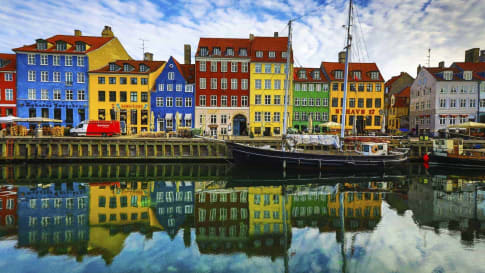
13 days
Jun, SepScandinavia tours for mature travellers
Visiting Denmark, Norway
Uncover on a small group tour for couples and solo travellers, a Viking past and view of the world’s biggest fjords on this journey through Scandinavia. In low-lying Denmark our small group journey takes us to visit the Zeeland, the sea land, and our program includes the vibrant capital of Copenhagen. In Norway we travel through endless forests, skirting great fjords to Bergen.
From A$14,995 AUD
View Tour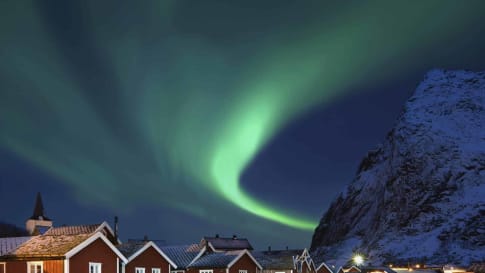
10 days
Oct, JanNorthern Lights Small Group tour | Visit Norway and Finland
Visiting Finland, Norway
Odyssey's small group tour following the Northern Lights allows you to experience serene snow-covered Arctic landscapes. Throughout our journey guides and specialists will outline the history of this stark region and the nature of the peoples who wrested their living from it. A unique opportunity to view this natural phenomenon travelling as part of a small group.
From A$9,625 AUD
View Tour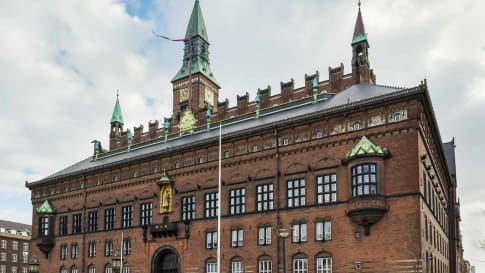
20 days
Aug, MayTour of Denmark's Culture & History
Visiting Denmark
Experience group travel for couples and single travellers to Denmark. This European tour provides a travel experience based around key destinations and itineraries that provide authentic experiences in Denmark .A single supplement applies for solo travellers.
From A$15,895 AUD
View Tour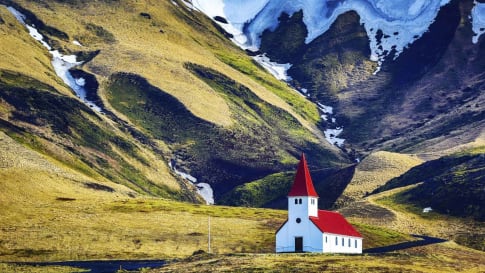
40 days
MayArctic circle tour
Visiting Denmark, Finland
A 40 day small group tour for senior couples and mature solo travellers interested in exploring the Arctic circle. The group with a program leader explores Greenland, Iceland, Faroe Islands of Denmark, Norway, Sweden and Finland. The tour makes use of the long summer night light for your enjoyment learning about viking history and trade and the Sami.
From A$44,995 AUD
View Tour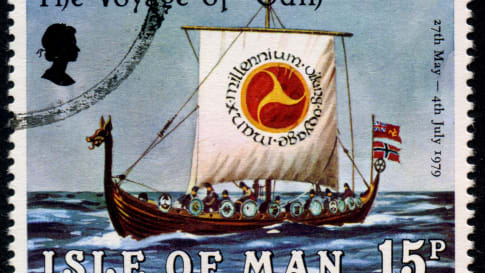
28 days
Jun, Sep, May, AugVikings in Britain; small group tour
Visiting England, Ireland
Vikings in Britain, escorted educational small group tour for senior couples and mature solo travellers who for 27 days explore Ireland, the isle of Man, Scotland and England and the viking history.
From A$20,385 AUD
View Tour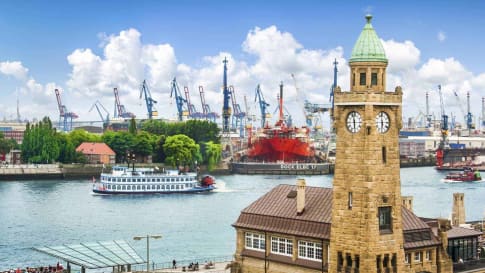
23 days
Sep, JunHistory of the Hanseatic League
Visiting Germany, Poland
Merchants generated much of the wealth of Europe, from Venice to Genoa, Lisbon and London. On the Baltic coast building on the Vikings, the Hanseatic league become the traders influence trade from the middle ages across Europe. This small group tour for senior couple and mature solo travellers explores the history.
From A$15,995 AUD
View TourRelated Articles
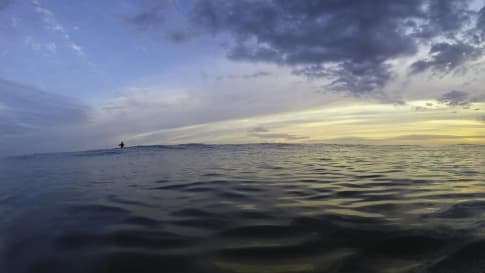
Atlantic Ocean and How it Shaped Ancient Communities In Europe
Article of interest for senior couples and mature solo travellers joining a small group European tour to Faroe Islands, Scottish Isles, Morocco or Portugal. Focus is on the early exploration of the Atlantic.
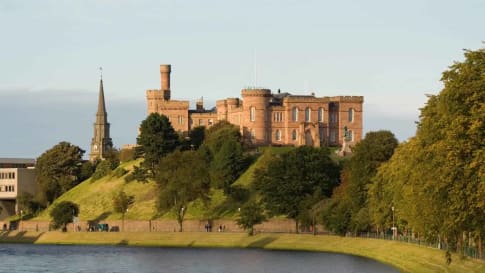
Birth of Scotland
Escorted small group tours for senior couples and mature solo travelers seeking to learn. Article about Scotland and you can learn more about the Jacobites, Orkney or Shetland islands as well Edinburgh, Aberdeen and more.
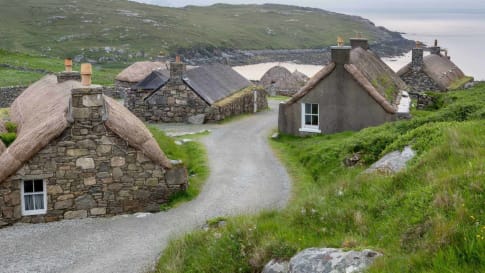
Islands of the Outer Hebrides: The Definitive Guide for Travellers
Scotland's Outer Hebrides are discussed in this article to assist the mature solo and couple in planning to visit Scotland and the British isles on a small group tour.

Isle of Skye, Scotland
Article about Scotland's Isle of Skye for senior couples and solo travellers seeking to explore on a small group tour of the Scottish isles learning about Scottish history, the Vikings and Atlantic trading routes.
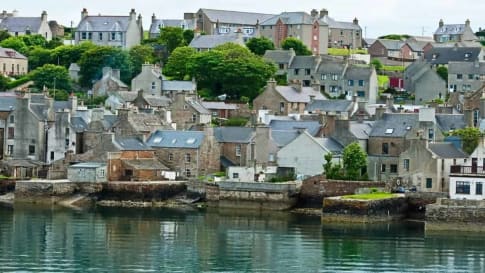
Orkney Islands, Scotland
Explore the Orkney and other isles of Scotland on a small group tour for senior couples or solo travellers interested in Scottish history. Learn about Skara Brae and prehistoric Britain as well as the importance of Peat and Whisky.
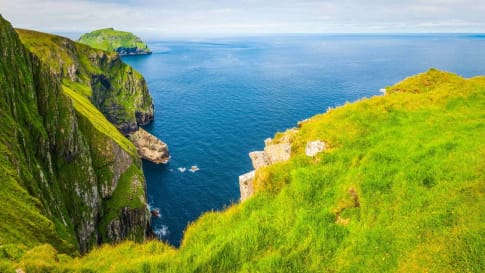
Questions about the Outer Hebrides, Scotland for senior travellers.
Explore and learn about on a Seniors small group tour of the Orkney Islands and other Scottish islands. Learn about the pastoral, cultural and historic settlement of the islands including Skara brae.

Sami culture within the Vikings
Article about the Sami culture of the Arctic circle for small group educational tours for senior couples and mature single travellers interested in learning about the Vikings and their journeys into the Atlantic and south across Russia.
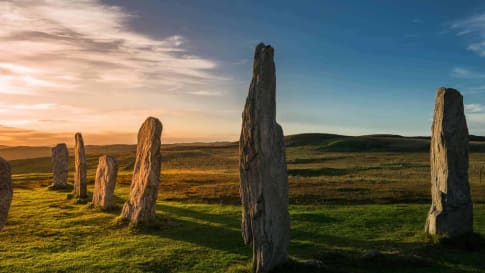
Shetland Islands Discovered: The Definitive Guide for Travellers
Article for senior and mature travellers, couples or solo travelers, interested in visiting the Shetland isles of Scotland. Explore on a small group tour to learn about the Bronze age, standing stones, peat and whisky and more when visiting the Scottish isles.
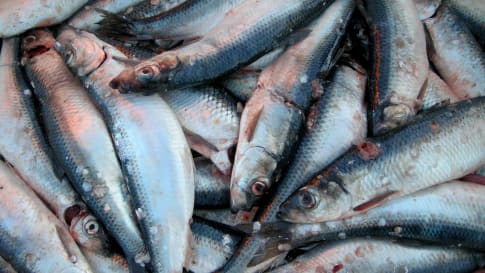
Shetland Salt Fish, Scotland
The Atlantic cod, the Faroe Islands, Spain, Scotland and Iceland are all historic cultures that have been influenced by Salt fish. An Antipodean travel company serving World Travellers since 1983 with small group educational tours for senior couples and mature solo travellers provides this article for the curious senior traveller.
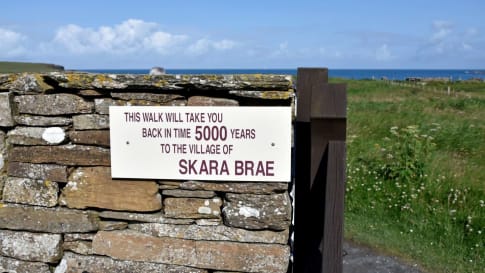
Skara Brae, Scotland
Article introducing Neolithic Britain and the trading routes to Iceland, the Faroe Islands and the Irish sea. Skara brae is included on the Scottish isles tour and the Prehistoric Britain program. Small group tours for senior couples and mature solo travelers.

Touring the beautiful Scottish Islands
Small group tours of the Scottish isles including Orkney, Skye, Iona and Shetland plus others for senior couples and solo travellers.

Exploring the Faroe Islands: The Definitive Guide for Travellers
The Faroe Islands, far far away Tjornuvik village, Faroe Islands The Faroe Islands (also called the Faroes or Faeroes) is a self-governing region of the Kingdom of Denmark, a group of 18 pristine volcanic islands…
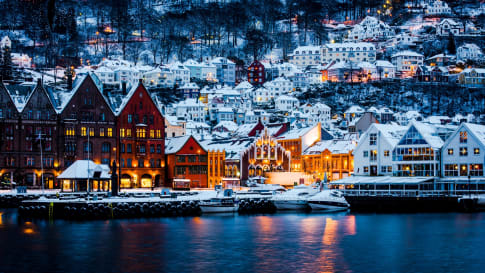
Hanseatic League
An Article on the early trading of Germany and the Baltic states by an Antipodean travel company serving World Travellers since 1983 with small group educational tours for senior couples and mature solo travellers who are curious.
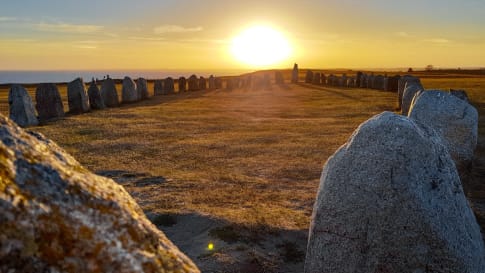
Vikings-explorers, raiders, traders
Article introducing Vikings and Outhere the explorer. Learn more on a small group educational tour for senior couples and mature solo travelers going to Iceland, Greenland, the Arctic circle or the Orkney islands.
